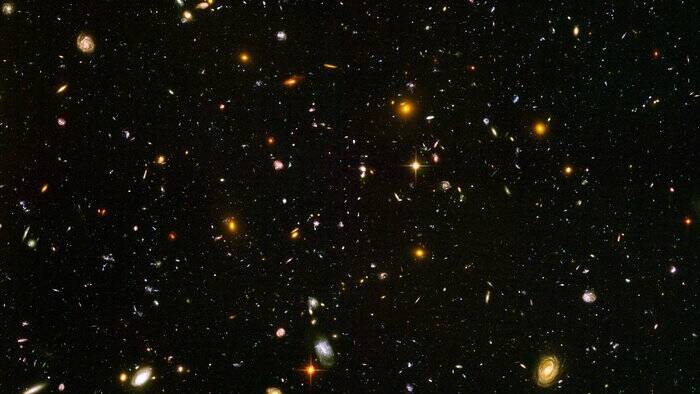
When the Hubble Space Telescope (HST) was launched in 1990, its life expectancy was about 15 years. Nearly 32 years later, it has far exceeded that expectation, still operating to this day.
HST has changed and furthered our knowledge of astronomy forever and paved the way for newer space telescopes to help us unravel the mysteries of the universe.
Hubble is extra special when it comes to space telescopes, not just because it was the first, but because it was placed in orbit close enough to Earth that astronauts could go to it and fix it if there were any problems.
If you've read about the James Webb Space Telescope (JWST), you may have seen that it had a complex folding structure so it would fit in a rocket, and that it is on its way to L2, 1.5 million kilometres away from Earth (in the direction away from the Sun), nearly four times further away from Earth than the Moon is. Astronauts would not have been sent to help JWST if there had been any issues.
It's definitely a good thing that Hubble was nice and close to Earth, because not long after launch, astronomers noticed that the images coming from Hubble were blurry, due to a slight error (1/50th the size of human hair) in its 2.4 metre mirror.
For the first few years, the images were fixed with computer programs, but in 1993 astronauts went out to Hubble to fit it with a series of mirrors that fixed the problem with the original mirror, basically fitting the telescope with glasses.
Astonishingly this image of a "blank" piece of sky was filled with thousands of galaxies ... all those smudges, the spirals and the strange dots are other galaxies, some much older than our own.
There have been other trips made to Hubble over the years, bringing new instruments to the telescope and fixing parts that were deteriorating, such as gyroscopes, which keep the telescope aligned with what it is looking at. There have also been a few scares where it has entered "safe mode" which means it basically shuts down because of errors in its computer. Luckily it has exited its most recent safe mode (as of December last year) and is back to operations.
There have been many images from Hubble that have furthered astronomical research, but one particularly famous one is the Hubble Ultra Deep Field. This image taken in 2003-2004 was a request to look at what appeared to be a blank patch of sky for a long time, to see if there was anything hiding that we couldn't see with our regular telescopes. This isn't the only deep Hubble image, there are others, including one that sees infrared light and the eXtreme Deep Field, combining all previous deep field images.
Astonishingly this image of a "blank" piece of sky was filled with thousands of galaxies. The few spots with cross hairs in them are stars, the cross is an artefact of how the mirrors are held. Everything else in the image is a galaxy, all those smudges, the spirals and the strange dots are other galaxies, some much older than our own.
The image has a total exposure time of 11.3 days (how much time cumulatively the telescope's camera was open) and is made of 800 images.
The Hubble Space Telescope changed the field of astronomy forever, and its successors will change the field again in new ways, as we learn more about our universe.
- Eloise Birchall has a Masters of Astronomy and Astrophysics (Advanced) from the Australian National University.







